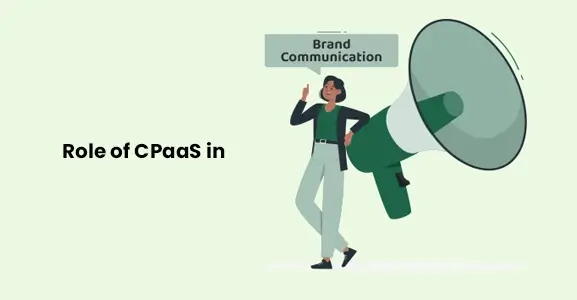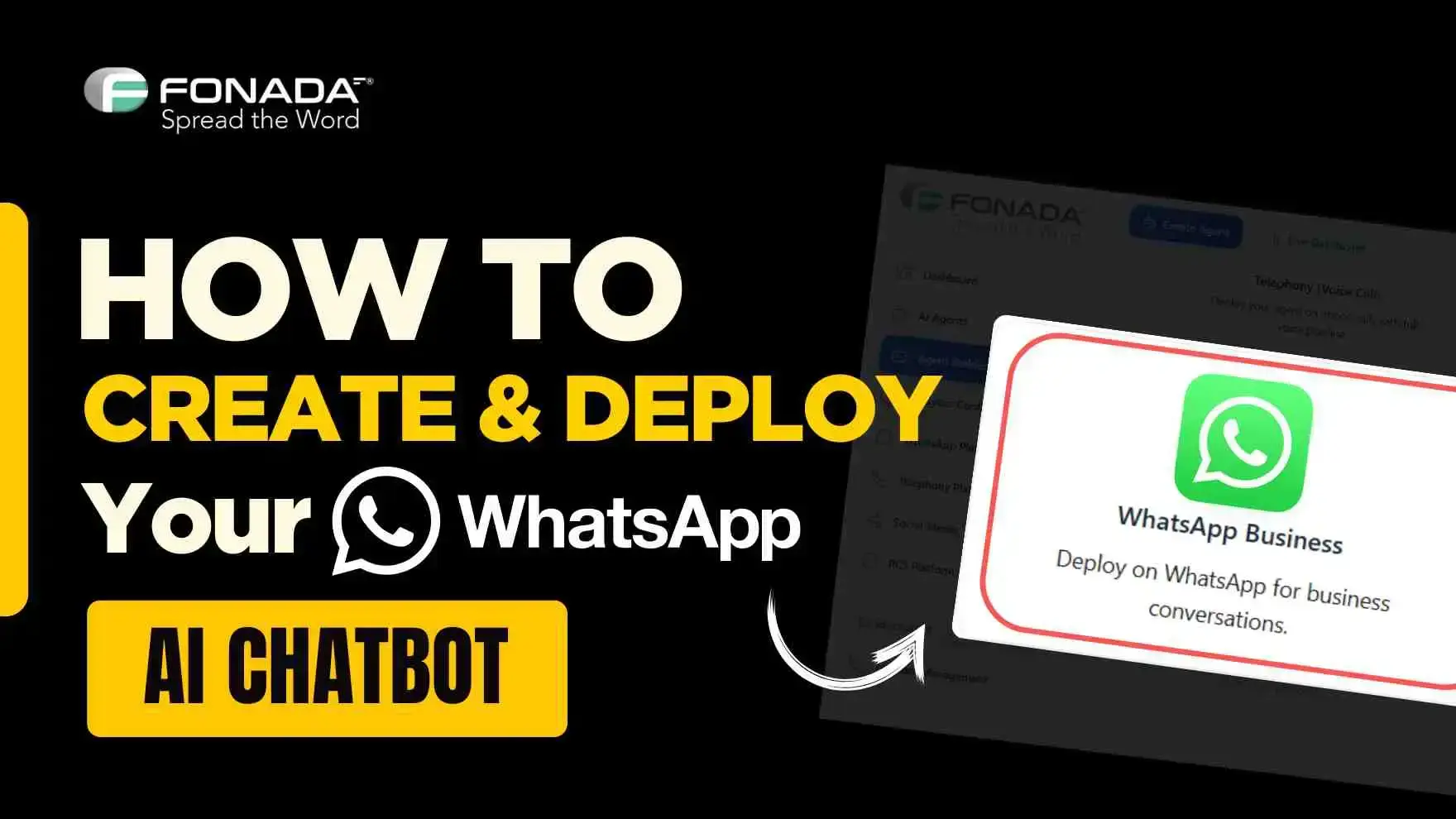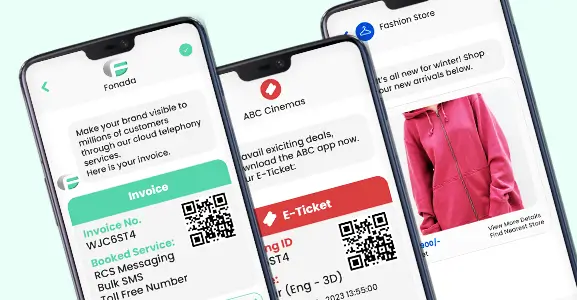Did you ever wonder why some advertisements grab your attention instantly, while others do not? The reason behind this is the effectiveness of the marketing techniques used. Businesses that crack the secret behind effective communication with customers are able to engage effectively with their customers.
Think about your favorite brands. What do they all have in common? They speak to you in a way that feels personal and genuine. Brand communication is the art of crafting messages that not only catch your eye but also resonate with your heart. It’s about creating a narrative that makes you feel connected and loyal.
Now, let’s understand how companies do this. They start by leveraging advanced CPaaS solutions and defining a unique identity that sets them apart from the competition—it’s like putting a face to a name. This identity is consistently communicated across all platforms using cloud telephony solutions—be it social media, advertisements, or even customer service. Each interaction with the brand reinforces its story and values.
When a brand nails its communication strategy, you’re more likely to engage with it. You’ll share its posts, recommend it to friends, and stick with it through thick and thin. This kind of loyalty translates into long-term business growth.
This blog post explains how to use CPaaS solutions to facilitate effective brand communication and foster stronger customer relationships.
Let’s Get Started…
What Is Brand Communication?
Brand communication is the process of facilitating a smooth conversation between a business and its target audience. It refers to the various methods and channels through which a brand can interact with its actual audience and convey its identity messages and values.
It uses tactics like advertising and social media to reach customers. The goal is to influence how customers view the brand and its importance.
Every customer interaction offers an opportunity to shape a brand’s personality and experience. This process, known as branding and communication, is pivotal to the overall strategy. Brands leverage it to inform, persuade, and educate customers about their values, services, and offerings.
Examples include billboards, radio ads, TV commercials, newsletters, online posts, reviews, and direct contact with employees. These methods aim to create a strong and consistent brand image and build an effective and unified communication approach.
Role Of CPaaS Solutions In Brand Communication
CPaaS solutions play a vital role in enhancing brand communication by offering versatile and integrated communication services that empower businesses to facilitate smooth conversations.
Here’s how CPaaS solutions contribute to brand communication:
Omni-Channel Communication
Absolute connectivity is essential for facilitating powerful brand communication with customers. CpaaS solutions allow businesses to use various channels such as SMS, voice calls, emails, and social media applications effortlessly for brand messaging and engaging interactions with customers.
Personalized Interactions
CPaaS solutions come with advanced data analytical capabilities that enable businesses to personalize interactions using customer data. Based on these findings, businesses can efficiently strategy their Voice and text messages in campaigns for higher customer engagement and satisfaction.
Automation And Efficiency
Automation of communication can be easily achieved with CPaaS solutions. Cloud telephony solutions such as IVR, number masking, bulk SMS, WhatsApp API etc, support automated messaging, which means businesses can automate communication workflows such as appointment reminders, order confirmations, and customer support queries. Resulting in higher operational efficiency
Integration With CRM Systems
CPaaS solutions often integrate with CRM systems, allowing brands to manage customer relationships more effectively by consolidating communication data.
Example:
Scenario: Imagine a retail Fashion Brand,” using CPaaS to enhance brand communication.
Use Case: The fashion brand implements CPaaS to send personalized SMS alerts for order updates and promotional offers to its customers. It also integrates voice solutions for interactive voice response (IVR) to handle customer queries efficiently.
Benefits: With CPaaS, The fashion brand achieves:
- Improved customer engagement through brand messaging
- Enhanced operational efficiency by automating order notifications and customer service.
- Scalability to handle peak shopping seasons without disruptions.
- Streamline business communication
By leveraging CPaaS solutions, the fashion brand enhances its brand communication and fosters stronger customer relationships and operational effectiveness.
5 Benefits Of Effective Brand Communication
1. Creates Brand Awareness
Effective brand communication significantly boosts brand awareness. When a business effectively conveys its brand message, it reaches a broader audience and leaves a lasting impression on potential customers. Utilizing various marketing channels such as social media, email marketing, and advertising can enhance brand visibility and attract new customers. This approach also helps differentiate a brand from its competitors, establishing a unique identity in the market.
Example: A new coffee shop uses Instagram to share its unique coffee blends and cosy ambience through engaging posts and stories. As a result, more people become aware of the coffee shop, visit it, and share their experiences online, further increasing its visibility.
2. A Higher Level Of Customer Loyalty
Consistent brand communication fosters customer loyalty. When a business consistently conveys its brand message across all touchpoints, it builds trust and reliability with its customers. This consistency helps create a loyal customer base that aligns with the brand’s values and principles, leading to increased emotional connections and repeat purchases.
Example: A skincare brand consistently emphasizes its commitment to natural and eco-friendly ingredients across all its marketing platforms. Customers who value sustainability become loyal to the brand and continuously purchase its products.
3. Increase In Sales And Revenue
Effective brand communication attracts more customers, increasing brand visibility and creating a positive image in customers’ minds. This positive perception leads to higher sales and revenue. By conveying a clear and distinct brand message, businesses can separate themselves from competitors and establish a unique value proposition
Example: A tech company’s advertising campaigns highlight its innovative features and superior customer service. As a result, customers are more inclined to choose its products over competitors, leading to increased sales.
4. Better Brand Reputation
Consistent brand communication enhances a business’s reputation. By maintaining a consistent flow of information across all channels, businesses create a positive image among customers. This approach helps establish the brand’s values and principles, fostering increased trust and loyalty. A positive brand reputation also attracts new customers, contributing to revenue growth.
Example: A fashion brand regularly shares stories about its ethical production processes and fair trade practices. This transparency builds a strong, positive reputation, encouraging more customers to support the brand.
5. A More Engaged Workforce
Effective brand communication improves employee engagement. Clear communication of the brand message creates a sense of purpose and direction for employees. Aligning employees with the brand’s vision and mission enhances job satisfaction and motivation. Additionally, effective brand communication attracts and retains top talent by establishing a positive company culture.
Example: A software company regularly communicates its mission to innovate and improve user experience to its employees. This clear vision motivates employees, fostering a collaborative and engaged workforce.
5 Steps To Craft An Exceptional Brand Communication Strategy
A well-defined strategy is essential to effectively conveying your brand and achieving your marketing objectives. Here are five key steps to developing a compelling and impactful brand communication strategy.
1. Establish Your Brand Communication Objectives
Setting clear communication objectives is the cornerstone of a successful strategy. Begin by reflecting on your broader business and marketing goals. Identify specific objectives, such as launching a new product, expanding your customer database or repositioning your brand in the market.
2. Identify Your Target Audience And Competitors
Identifying and understanding your target audience is crucial for enhancing your brand communication effectively. Inspect their demographics, preferences, needs, and pain points to create messaging that resonates deeply.
3. Develop Your Core Messaging
Your core messaging is the heart of your brand’s identity, values, and unique offerings. It distinguishes you from competitors and ensures consistency across all touchpoints.
Define USP, Share your brand’s story, including its origin, values, and mission, to foster emotional connections and build trust. Use clear, concise language that resonates with your target audience and avoids jargon.
4. Tailor Your Communication To Different Channels And Audiences
Each communication channel has unique characteristics and audience demographics. Craft your messaging for each platform to ensure it is well-received and engaging.
Research the differences in audience segments across various channels. Adapt style to match the platform, whether it’s a casual or conversational tone. This will ensure that your communication aligns with your target audience.
5. Continuously Improve Through Measurement And Refinement
Constantly evolving your strategy is crucial for staying ahead and meeting your audience’s changing needs. Implement a robust measurement and analysis system to evaluate your brand communication efforts.
Track relevant metrics such as engagement, clicks, reach, and conversion rates across various platforms. Leverage A/B testing to get the effectiveness of different messaging variations and optimize your approach accordingly. Collect and evaluate customer feedback and monitor online reviews to gain qualitative insights for refining your strategy.
By following these steps, you can develop a strong and impactful brand communication strategy that effectively conveys your brand’s essence and achieves your marketing goals.
Popular CPaaS Solutions Playing A Major Role In Shaping Your Brand Communication
Maintaining effective communication is the key to building a strong customer relationship. Here are popular CPaaS solutions that play a major role in shaping your brand communication
1. Interactive Voice Response (IVR)
Interactive Voice Response (IVR) systems are powerful tools for brand communication. IVR allows you to standardize greetings and messages, ensuring that every customer interaction aligns with your brand’s tone and style.
2. Number Masking
With number masking solution, businesses safeguard the privacy of both their customers and employees by masking real phone numbers during interactions. This avoids all the unwanted possibilities that might affect the customer experience and facilitates a smooth brand communication.
3. Bulk SMS
Sending bulk SMS is the most effective and efficient way to reach your target audience. This method establishes a robust channel of brand communication, ensuring instant reach and higher open rates.
4. Rich Communication Services (RCS)
RCS messaging allows businesses to interact with their target audience in a personalized manner by sending interactive message content such as videos, carousels, images, etc. It plays an important mode of communication between businesses and customers and facilitates an engaging channel for business communication.
Practical Use Cases Of Brand Communication
Businesses across various industries employ brand communication strategies in practical ways. Here are some real-life examples:
- Apple’s Product Launch Events: Apple utilizes highly anticipated events to unveil new products, generating excitement and media coverage worldwide. Their consistent messaging around innovation and sleek design reinforces their brand identity.
- Nike’s Social Responsibility Campaigns: Nike frequently communicates its commitment to social issues through campaigns like “Dream Crazy” featuring Colin Kaepernick, aligning with their brand values of empowerment and social justice.
- Starbucks’ Customer Engagement: Starbucks engages customers through personalized marketing emails, loyalty programs like Starbucks Rewards, and social media interactions, fostering a community around coffee culture.
- Coca-Cola’s Brand Positioning: Coca-Cola consistently promotes its brand as synonymous with happiness and togetherness through global advertising campaigns like “Share a Coke,” reinforcing emotional connections with consumers.
- Tesla’s Thought Leadership: Tesla CEO Elon Musk’s active presence on Twitter and through media interviews not only promotes Tesla’s products but also positions the company as a leader in sustainable energy and technology innovation.
- Patagonia’s CSR Initiatives: Patagonia communicates its commitment to environmental sustainability through initiatives like the “Worn Wear” campaign, promoting reuse and repair of outdoor gear, aligning with their eco-friendly brand image.
- Amazon’s Crisis Management: Amazon uses swift and transparent communication during crises, such as addressing concerns about worker conditions or cybersecurity breaches, to maintain trust and reputation among stakeholders.
- Red Bull’s Event Marketing: Red Bull sponsors and organizes extreme sports events globally, aligning with its brand image of energy and adventure, and uses social media to amplify these events, engaging a global audience.
Conclusion
Businesses across various industries use various CPaaS solutions to streamline their brand communication with customers. These solutions empower businesses to strategically use brand communication to build relationships with customers, reinforce brand values, manage crises, and establish thought leadership in their industries. Each strategy is tailored to the brand’s identity and the expectations of its target audience.
FAQs
Effective brand communication helps to build and maintain a strong brand identity, fosters customer loyalty, and differentiates the brand from competitors.
Common challenges include maintaining consistency across different channels, effectively reaching and engaging the target audience, managing negative feedback, and keeping up with the fast-paced changes in digital marketing trends.
In the event of a crisis, it is important to respond quickly and transparently, take responsibility if necessary, communicate clearly with the audience, and take corrective actions.
Brand communication is how a company shares its identity and values with customers.
Identify the audience, define the message, choose channels, create content, and assess effectiveness.
Product, Price, Place, and Promotion—essential elements for effective brand messaging.
Planning and executing messaging to align with long-term business goals and brand identity.
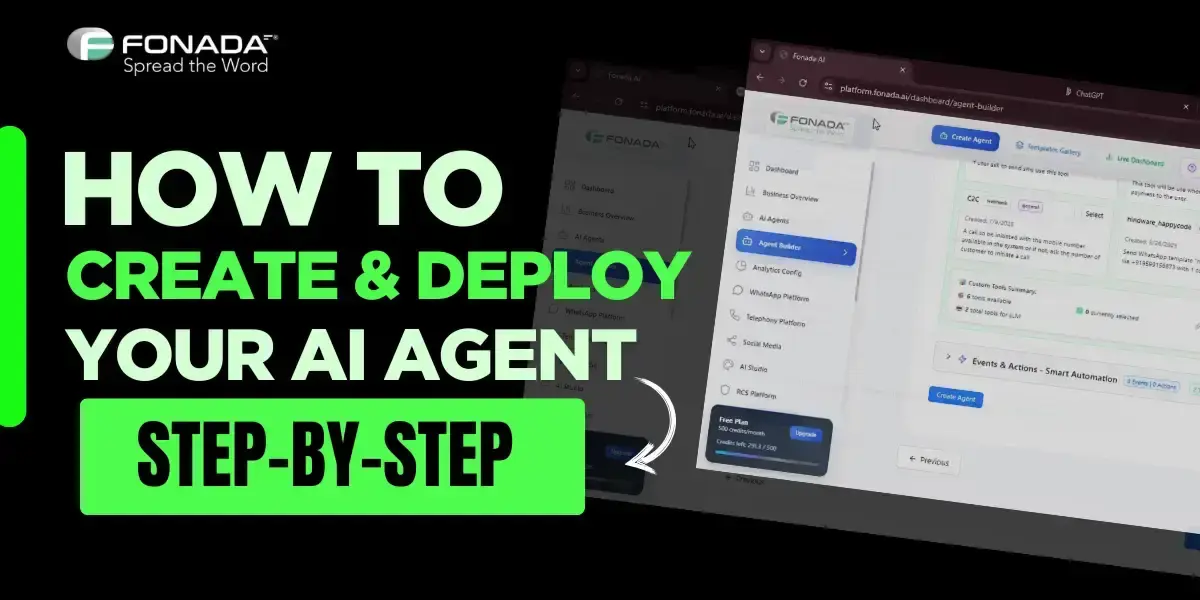
Nov 13, 2025
How to Create and Deploy an AI Chatbot Using Fonada AI | Step-by-Step Guide
Imagine having a smart assistant that greets your customers instantly,... Read More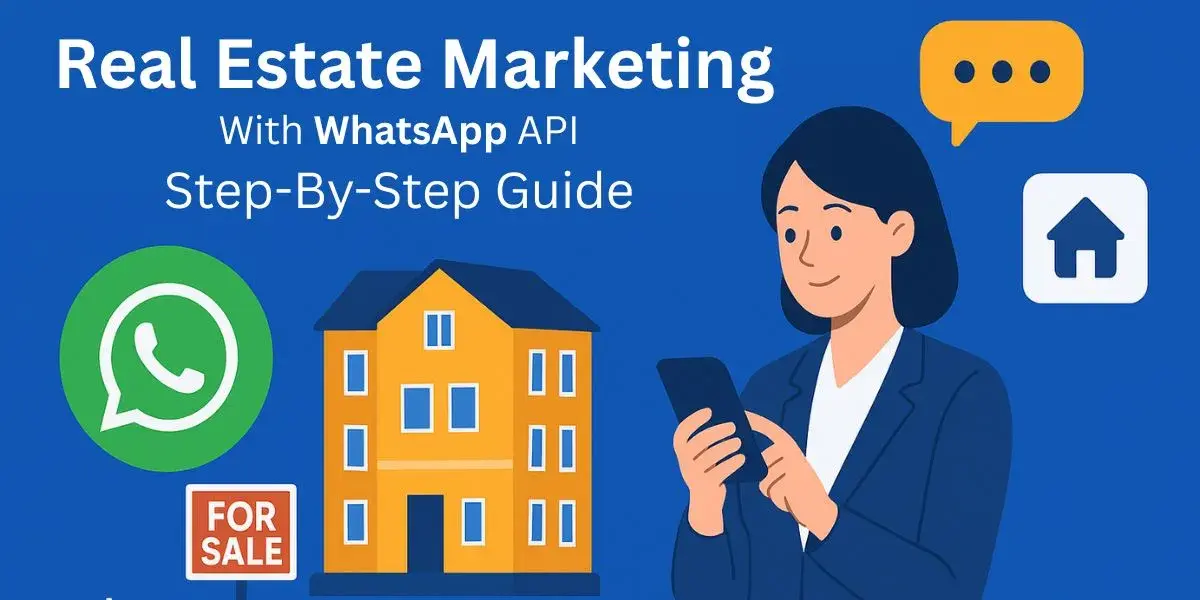
Nov 12, 2025
Real Estate Marketing with WhatsApp API: A Step-by-Step Guide
The real estate industry thrives on communication and trust. Today, buyers expect instant responses,... Read More
Aug 08, 2025
Top 10 Best Customer Service Software Solutions 2025
Resolving customer queries with perfection has always been quite challenging and crucial for busines... Read MoreLatest Updates
From Fonada
Industry Insights, Trends, Innovations, Updates, and Case Studies from Industry Experts
View
Customer
Reviews
Discover why our customers love us - read their authentic and heartfelt reviews!
View
Case
Studies
Explore real-life scenarios, offering analysis, and solutions to practical challenges
View
Convert Leads Into Sales With Fonada
Trusted CPaaS Solution Provider

